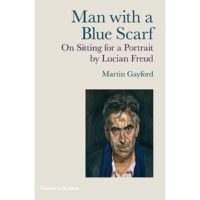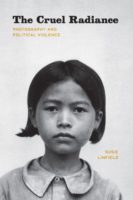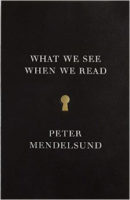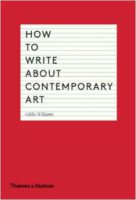One of the most common questions I run into, regardless of whether it’s from students or from people I meet, is whether I have book recommendations. I do. While there are many good books about photography and art in general, a select few are better than others. The following is a list of the books that I’d consider essential reads for photographers, for reasons that I hope will be clear from my descriptions.
This list is a work in progress. Books are listed in alphabetical order, using the author’s last name. I will add more books over time, either when I remember a book I forgot, or when there’s something I just discovered. Needless to say, your mileage might vary: the list inevitably is very subjective. And it excludes some well-known books. But that’s what you get when you make a list.

Gerry Badger – The Pleasures of Good Photographs
Gerry Badger’s The Pleasures of Good Photographs is part of a series of books the publisher calls Ideas. Many of those books essentially look and read like the collections of recycled newspaper reviews or articles they are. This book, in contrast, is a real gem. For a start, Badger is one of the best writers focusing on photography. Just like every writer, he has his preferences. That, of course, is part of what makes him such a good writer: if you are a writer, you need to have that place where you’re coming from. And then you build on that, knowing that your position in the long run might shift quite a bit.
The essays in the book cover a wide range of topics; and there isn’t a single piece included that had me not interested – quite the feat given I’m not a fan of all the photographers discussed in the book. If I don’t have to see another picture by [redacted] in my life time, I’ll be happy. But I’ll take another piece by Gerry Badger about that very photographer any time!
Badger’s strength is to write pieces that are grounded in photography and not in fads or trends. The photographs are taken at face value, they are read and explored, and then Badger brings to them whatever might be relevant, whether it’s the photographer’s or someone else’s biography or thinking. To be able to write well about photography requires being able to look carefully at photographs. Gerry Badger has been looking very, very carefully.

Christian Boltanski/Catherine Grenier – The Possible Life of Christian Boltanski
The Possible Life of Christian Boltanski is a memoir in the form of extended conversations conducted over the course of a year. In the brief foreword, Catherine Grenier describes the result as a dictated “confession,” and that is quite apt. The book would not have succeeded, of course, had Boltanski not been game. And, boy, game he was! Diving deep into any possible topic, his life, art, and thinking are laid out clearly.
It’s hard to tell how tall some of the tales might be. There is very little pretense here, but a lot of honesty and frankness. Boltanski is not afraid to offer his opinions, both on other artists and, crucially, on his own work. While not considered a photographer, his practice involved a fair amount of photography. His insight into what photographs do and can do, and how we approach them is amazing. Boltanski probably understands the medium better than many of its own practitioners.
The book is so engrossing and often entertaining that it’s very hard to put it down. Thankfully, there are chapters that focus on different aspects of the artist’s life (there is considerable overlap between those, of course). Its only drawback is that amazing insight into photography or art or the creative process is offered so nonchalantly that the book is almost too easy to read. But then, reading about art should not be a drag. Approaching seemingly complex pieces of art should not be a drag. Much to their credit Boltanski and Grenier show how it can be done.

Paul Cronin – Werner Herzog: A Guide for the Perplexed
It’s easy, maybe too easy, to be amused by Werner Herzog. There appears to be something strangely appealing about this man who has made a series of great movies and documentaries. He is willing to state the seemingly most outlandish stuff with a straight face and that Bavarian-German accent, which, I think, helps him get away with a lot. The reality behind the man, as far as it accessible, is considerably more complex.
Herzog is a man of severe convictions, many of which run counter to what we take for granted and many of which are a lot less amusing than we would like to think. He also is a man who has photographers much to offer. Werner Herzog: A Guide for the Perplexed: Conversations with Paul Cronin is the kind of book they might want to put on their bedside table, to take parts of it in regularly.
In form a series of very extended conversations, it really is more like a very long monologue, prodded by Paul Cronin who was smart enough to step back, to let his subject speak. It’s intensely smart, and it can teach us a thing or two what can be gained from believing in something, however outlandish it might appear at times, and then simply doing it.

Eric Fischl – Bad Boy
If you’re a photographer, why would you read the biography of a painter? For a start, I think it’s essential for photographers to spend quite a bit of time looking at other art forms, in particular in the visual arts, to develop a deeper understanding of art in general. What is more, understanding painting better helps realizing what photography can do – and what it can’t do. I think the relationship between photography and painting is very interesting, and I think there is a lot to be gained from learning about painting.
In addition, Bad Boy is an incredibly engaging read (at least until the very end, when it falls a little flat). Fischl, one of the “hottest” stars in painting in the 1980s, lays out his biography very openly, both to have the reader understand how the biography informs the work, and to share the often tough road to ultimately discovering what he wanted to do and how it could be done. Then there’s the success and the dealing with that, the rivals, the marriage to another artist – as can be imagined, the source of much tension; and there’s the, well, falling from grace, the having to deal with the fact that now other people are the stars.
Biography aside, Fischl lays out his thinking behind large parts of his work. The passages describing the process of painting, the construction of specific narratives, and the ultimate read of the final pieces are really essential. If you’re a photographer, and you can’t read your own work, you got nothing. Paintings are different enough from photographs to make simple comparisons iffy. But because of those differences, the reading of a painting allows for getting powerful lessons for photographers.

Joan Fontcuberta – Pandora’s Camera
It might be just easiest to refer to my review of the book to explain why it’s included in this list.

Martin Gayford – Man with a Blue Scarf
Imagine you sit in front of an old man with a penetrating gaze for an extended period of time. Imagine that man is a well-known painter whose portraits defy our societal conventions of what is beautyful. Imagine that man is painting a portrait of you. Then what?
That painter was Lucian Freud, and you don’t have to imagine sitting any longer, because Martin Gayford did it for us, to then produce the amazing Man with a Blue Scarf as a result. Beyond the immediate thrill of the situation, why is any of this interesting, though? It begins with Lucian Freud himself, who spoke quite a bit with Gayford both during the sittings and afterwards (there were frequent dinners).
And then there’s the process of painting a portrait, a process that’s so vastly different from producing a photographic portrait. Photographers often talk about taking portraits as if we were dealing with the re-invention of one of the most ground breaking human activities. As much as I love looking at (good) photographic portraits, its process still is, well, quite banal compared to what goes on when there’s a canvas and some paint. And the results are so different, while seemingly being so similar.
So you learn a lot about Freud’s approach and thinking about his art, but you also learn a lot about portraiture itself and what a portrait is (and what it is not). If you read the book carefully, I think you can learn a lot about how the photographic portrait works – you just have to constantly compare what is being talked about in the book with what you’re getting when you put a little machine in front of someone.

Roger Grenier – A Box of Photographs
I don’t think “charming” is the first word that would come to mind when one thinks about a lot of photography writing. And that’s perfectly fine, given that quality writing can be incredibly wonderful without being charming. Roger Grenier’s A Box of Photographs, however, is a book that is incredibly charming, and for that reason alone I enjoyed reading it immensely.
A biography centered on photography, on discovering cameras and working with photography, the book talks about the medium – and what it does – in ways that are a healthy antidote to both the superficial, technology obsessed writing so ubiquitous today and the soulless, dismissive theoretical stuff that, unfortunately, is so influential.
If you’re a photographer and you’re not in love with photography any longer… Well, you’d really want to ask yourself what the hell you’re doing. But anyway, if you think you still want to be a photographer, and you want to love photography again, read this book. At just a little over 100 pages, it might just do the job.
If, however, you love the medium and what it can do, you want to read this book as well, because you’ll love it a little more, and you’ll get to discover (or maybe re-discover) some things that have become a bit buried in this day and age of Instagram, things that are still very valid.

Susie Linfield – The Cruel Radiance
For its first chapter alone, Linfield’s The Cruel Radiance should be required reading for any photography MFA student. The author makes it very clear that photography criticism should start out with photographs and from photographs, instead from tiresome, outdated ideology or an outright disdain of the medium. What is to be gained from such an approach is then laid out in the following sections, each diving deep into photography and its relationship with and (in)ability to deal with human suffering.
Thinking about writing a little snippet about the book, I picked it from my book shelve, to find dozens and dozens and dozens of flag markers sticking out from its pages. What can I say? We might struggle with photography and its relationship to suffering for a long time. But if we make this book – and not Sontag’s – the starting point from which to explore the subject matter, we might actually get somewhere.

Peter Mendelsund – What We See When We Read
Photography doesn’t work like language. We might (or might not) “see” certain things when we read, yet we certainly see very specific things when we view a photograph or photobook. But then, it’s not that clear what imagery we actually conjure up when reading a novel. Peter Mendelsund’s very smart and engaging What We See When We Read deals with just that. An art director/book cover designer, Mendelsund brings a unique sensibility to his subject, which resulted in a book that you end up looking at as much as reading it. It’s filled to the brim with illustrations that work very closely with their associated text, leading the reader/viewer down all kinds of paths while attempting to figure out what we “see” when we read.
Why would a photographer look at this, though? Well, we see very specific things when we look at a photograph. But what we see isn’t necessarily what is in the picture. There is a lot more – the mental stuff we bring to the plate; and there is a lot less – all the various little things we manage to overlook. Add, let’s say, 40 photographs together to make a photobook, and all of that adds up in strange ways. How do you go about editing and sequencing a photobook? I believe Mendelsund’s book offers a unique take on just that – you need to engage with his ideas, and then you have to see how things might change once you’re dealing with pictures instead of words.
For example, a character in a novel mostly is a name – “Anna Karenina” – plus whatever attributes her creator gave her. In photography, you would have a photograph of a woman – without the name, and without many of the attributes that might be relevant. How would you add those? How would you go about telling the story? So for photobooks that want to work with a story or narrative, there is a lot to be learned from What We See When We Read: to know how to tell stories, you need to know how your tools work, what they do – and what they don’t do.

Gilda Williams – How to Write About Contemporary Art
For most photographers, writing about their own work – the dreaded artist or project statement – is possibly the worst activity they have to engage in. It needn’t be so, especially now that Gilda Williams’ How to Write About Contemporary Art is available (granted, there’s also my How to write about your photographs). As Williams lays out over the course of a little over 200 words, writing about art really shouldn’t cause too many headaches, given that sticking to a few very basic rules helps massively. With a plethora of examples of good writing included, here’s a book that every serious photographer might want to add to their library.

Carl Wilson – Let’s Talk About Love
The original version of Carl Wilson’s book was called Celine Dion’s Let’s Talk About Love: A Journey to the End of Taste. There is an updated edition entitled Let’s Talk About Love: Why Other People Have Such Bad Taste. I’d probably suggest getting the first edition, simply because the second edition merely features a bunch of additional essays, most of which are rather forgettable (the only exception is an essay that you can find online).
What does Celine Dion have to do with photography? Let’s ask a different question: what does Celine Dion have to do with Annie Leibovitz? See what I’m getting at?
Large parts of Wilson’s book deal with the idea of what is “cool” and what is not, in particular how we define what we are comfortable admitting we like, or what we feel compelled to profess we dislike. Wilson bases his writing on French sociology, and this could easily make for an incredibly tedious and boring read, if he hadn’t embedded things smartly in exploring the music and appeal of, yes, Celine Dion.
And this only shows that if we set out to look into things that we really don’t like, things that we might dislike because of the status conferred onto us through that act, there is a lot for us to learn.